Google finally introduced the Pixel 8 and Pixel 8 Pro on October 4 after months of leaks and anticipation. Both devices are powered by the new Tensor G3 chipset, and the in-house SoC developed by Google looks quite promising. It brings considerable performance improvement over last year’s Tensor G2. But how does the Tensor G3 stack up against Snapdragon 8 Gen 2 and A17 Pro? Does it have the prowess to beat Qualcomm and Apple in the silicon game? Well, to find out, let’s go through our detailed comparison between the Tensor G3, Snapdragon 8 Gen 2, and Apple A17 Pro.
Tensor G3 vs Snapdragon 8 Gen 2 vs A17 Pro: Specs Comparison
Before we proceed, check out the specifications comparison between the Google Tensor G3, Snapdragon 8 Gen 2, and Apple A17 Pro right here:
Specs Google Tensor G3 Snapdragon 8 Gen 2 Apple A17 Pro CPU Nine-core CPU Octa-core, Kryo CPU Six-core CPU, 19 billion transistors CPU Cores 1x 2.91GHz (Cortex-X3)
4x 2.37GHz (Cortex-A715)
4x 1.70GHz (Cortex-A510)1x 3.2GHz (Cortex-X3)
2x 2.8GHz (Cortex-A715)
2x 2.8GHz (Cortex-A710)
3x 2.0GHz (Cortex-A510)2x 3.78 GHz High-performance cores
4x 2.11GHz High-efficiency coresProcess Technology Samsung’s 4nm TSMC’s 4nm process TSMC’s 3nm process (N3B) GPU 7-core Mali-G715 GPU Adreno 740 GPU; Hardware-accelerated Ray Tracing Apple Pro-class 6-core GPU
Hardware-accelerated Ray TracingMemory Support LPDDR5X LPDDR5X LPDDR5 Machine Learning and AI New Google Custom TPU (Codename “Rio”) New AI Engine, Hexagon Processor 16-core Neural Engine; 35 TOPS ISP Google Custom DSP (Codename “Callisto”) Triple 18-Bit Spectra ISP; Cognitive ISP, Snapdragon Sight Apple-designed Image Signal Processor Camera Capability Take full resolution photos, SuperRes Zoom up to 30x, Magic Eraser, Best Take AI feature Capture photos up to 200MP, 36MP triple shots with ZSL ProRAW photos at 48MP
Photonic EngineVideo Capability 4K at 60FPS, 10-bit HDR, OIS + EIS, AI-powered Audio Magic Eraser, Real Tone in Videos, Cinematic Blur 8K HDR, Bokeh Engine 2 4K60 ProRes videos
Spatial video recording
4K HDR Dolby Vision @ 60FPS
Cinematic 4K@24FPS
Action modeModem Samsung Exynos 5300 5G modem
Up to 3.0Gbps Peak Download
Up to 422Mbps Peak UploadSnapdragon X70 5G modem
Up to 10 Gbps Peak Download
Up to 3.5 Gbps Peak UploadSnapdragon X70 5G modem
Up to 10 Gbps Peak Download
Up to 3.5 Gbps Peak UploadWiFi Support Wi-Fi 7 Wi-Fi 7 Wi-Fi 6E Bluetooth Bluetooth 5.3, LE Bluetooth 5.3, LE Audio, Dual Bluetooth Antenna, aptX Lossless Bluetooth 5.3, LE Others Av1 Encoder and Decoder AV1 Decode Support
NavIC SupportAV1 Decoder
ProRes codec
Pro display engine
NavIC Support
Tensor G3 vs Snapdragon 8 Gen 2 vs A17 Pro: CPU
Tensor G3
Let’s first start with the CPU comparison between Tensor G3, Qualcomm Snapdragon 8 Gen 2, and Apple A17 Pro. Just like the previous year, Google has developed the Tensor G3 chipset in partnership with the Samsung Semiconductor division. Google Tensor G3 is built on Samsung’s 4nm LPP process node. There were reports that Samsung has gotten close to TSMC in 4nm process yield with the upgraded LPP+ process, but the Tensor G3 is still fabricated on an older fabrication process which is not great news, to begin with.
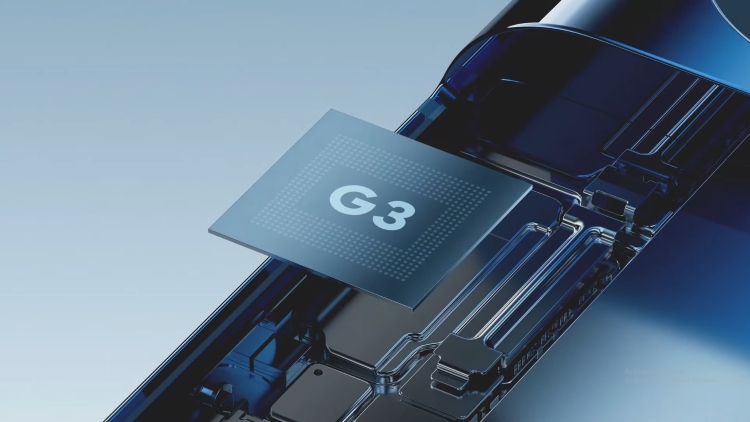
The Tensor G3 chipset features a unique architecture, housing a total of nine cores this year. It packs a year-old, but worthy Cortex-X3 prime core clocked at a slightly lower frequency, i.e. 2.91GHz. Along with that, 4x Cortex-A715 (2.37GHz) cores are paired with 4x Cortex-A510 (1.70GHz) cores.
From the CPU architecture itself, you can gauge that Google is being conservative with the clock speeds because these cores can go much higher, as we have seen with last year’s Snapdragon 8 Gen 2. The only outcome you can draw is that Google is looking to maximize efficiency rather than chasing top-notch performance with the Tensor G3, and that can turn out to be a good thing in 2023.
Snapdragon 8 Gen 2
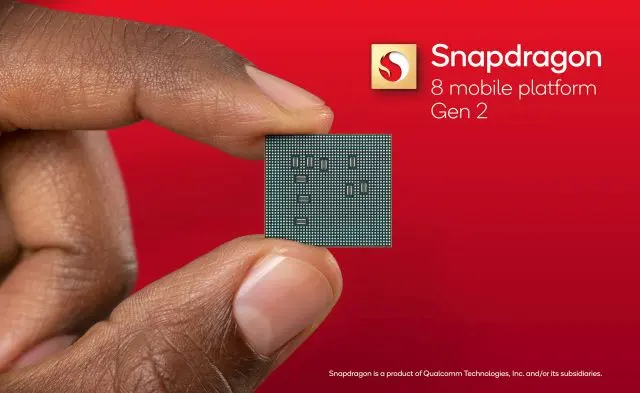
Coming to the Snapdragon 8 Gen 2, it’s pretty similar to the Tensor G3. It includes eight cores and is built on TSMC’s 4nm process node. It features a main Cortex-X3 (3.2GHz) core, 2x Cortex-A715 cores (2.8GHz), 2x Cortex-A710 cores (2.8GHz), and 3x Cortex-A510 cores (2.0 GHz).
Basically, the cluster architecture is 1+(2+2)+3. We have already seen the Snapdragon 8 Gen 2 has been hailed as one of the best processors released by Qualcomm in recent years. Its performance and efficiency figures have been absolutely remarkable, even outranking Apple’s A-series chips in many aspects.
A17 Pro
Now moving to the A17 Pro, well, it’s a beast of a chip but falls short on efficiency. Apple has gone with its traditional 6-core design with 2x performance cores clocked at a mighty 3.78GHz and 4x efficiency cores clocked at 2.11GHz. The A17 Pro is built on TSMC’s latest 3nm process node, hence, Apple has been able to pack close to 19 billion transistors on a single die.
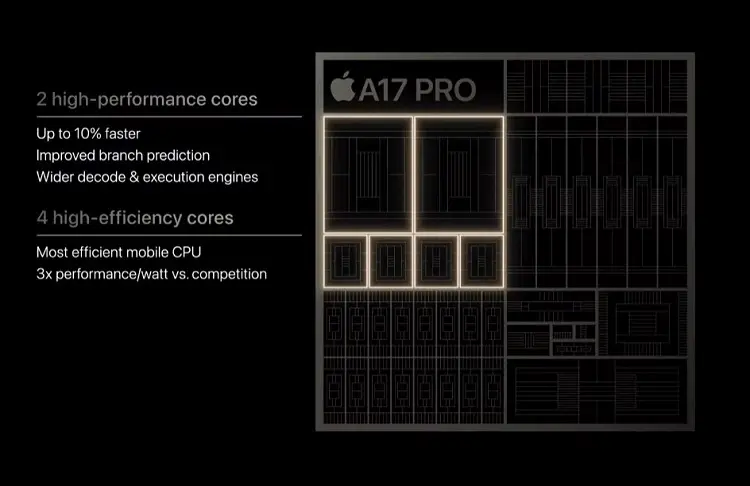
Among the three chipsets, the Apple A17 Pro is the most powerful SoC by a wide margin. However, initially, it was also marred by heating issues, as reported by iPhone 15 Pro users. Apple recently released iOS 17.0.3 to fix the overheating issue on iPhone 15 Pro and it seems to have resolved the problem. Nevertheless, in numerous tests, we have seen that the A17 Pro gets slightly warmer than other competing chipsets.
In summation, while Apple is charting top benchmark numbers, the Snapdragon 8 Gen 2 is still the preferred choice despite being a year-old chip. And the Tensor G3 is more like an underclocked version of SD8Gen2 which brings the promise of better efficiency while delivering respectable performance for everyday tasks.
Tensor G3 vs Snapdragon 8 Gen 2 vs A17 Pro: GPU
Talking about the GPU, Google has packed a 7-core Mali-G715 GPU on the Tensor G3. It’s surely a capable GPU, but Google has skipped on Ray Tracing support this year as well. Google could have gone with 9 cores or the 10-core Immortalis GPU for delivering powerful gaming performance. By the way, the Mali-G715 GPU is clocked at 890MHz on the Tensor G3. The GPU performance of past Tensor chips has been decent enough for everyday tasks, and it’s the same this year as well. It ranks way below the Snapdragon 8 Gen 2 and A17 Pro’s GPU in terms of sheer performance.

On the other hand, the Adreno 740 GPU on the Snapdragon 8 Gen 2 has proved its standing as the most powerful and efficient GPU across all mobile SoCs. It comes with hardware-accelerated Ray Tracing support, Snapdragon Elite Gaming features, support for Unreal Engine 5, and more. Its efficiency is uncontested and performs as good, if not better, as the A17 Pro’s GPU, for much less power. Bear in mind that the Adreno 740 is still a year-old GPU.
Coming to A17 Pro’s 6-core GPU, this year, Apple added HW-accelerated Ray Tracing support to its chip. Thanks to the improved GPU, you can now play console-quality games like Resident Evil Village, Resident Evil 4, Death Stranding, Assassin’s Creed Mirage, and others on your iPhone 15 Pro/Max.
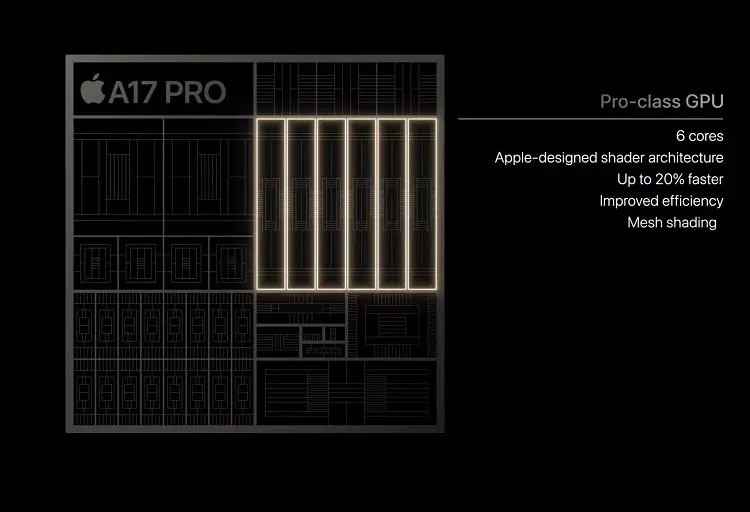
Having said that, Geekerwan (visit) dissected the GPU performance of the A17 Pro and found its power efficiency is much worse, despite moving to a new architecture. It draws more power, close to 11W for delivering peak performance, which is still lower than Adreno 740’s GPU performance.
So while Apple is making all the noise with the new GPU on the A17 Pro, the Adreno 740 GPU on the Snapdragon 8 Gen 2 still leads the race. And the upcoming GPU on the Snapdragon 8 Gen 3 is going to widen the gap even more.
Tensor G3 vs Snapdragon 8 Gen 2 vs A17 Pro: Benchmarks
We have done a detailed benchmark comparison of the Tensor G3, Snapdragon 8 Gen 2, and A17 Pro. For the tests, we have used the Google Pixel 8 Pro (Tensor G3), Samsung S23 Ultra (Snapdragon 8 Gen 2), and Apple iPhone 15 Pro Max (A17 Pro). All smartphones are up to date, and specifically, the iPhone 15 Pro Max is on the latest iOS 17.0.3 version that fixed the overheating issue.
Geekbench 6 Score
Here is the Geekbench 6 comparison between Tensor G3, Snapdragon 8 Gen 2, and Apple A17 Pro. The Tensor G3 is somewhat close to the Snapdragon 8 Gen 2, and the A17 Pro is off the charts. However, keep in mind that we are comparing Apple’s latest A17 Pro chipset with a year-old Snapdragon 8 Gen 2 SoC. For a fair comparison, we should wait for the upcoming Snapdragon 8 Gen 3 chip.
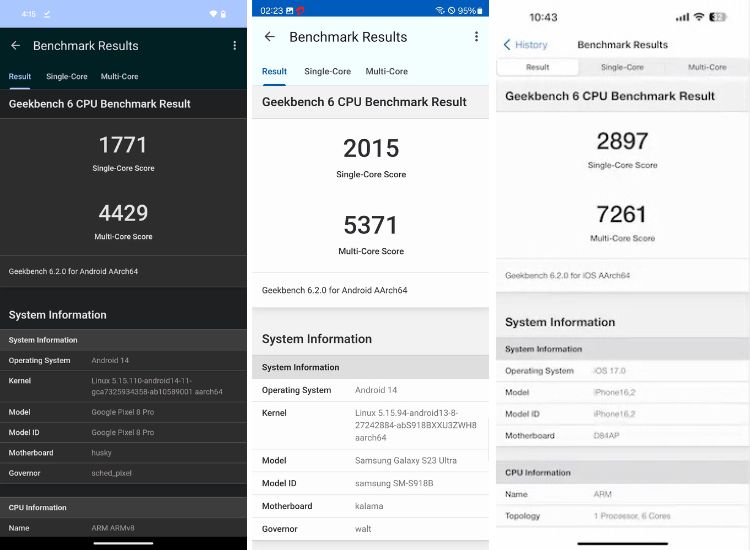
Take a look at the table below with the temperature reading. Google has indeed managed to keep the temperature in check with the Tensor G3 chipset.
Processors Geekbench 6 (Single-core) Geekbench 6 (Multi-core) Temperature Tensor G3 1771 4429 37.3°C Snapdragon 8 Gen 2 2015 5371 36°C A17 Pro 2897 7261 37.3°C

CPU Throttling Test
In a 15-minute CPU throttling test between the Tensor G3 and Snapdragon 8 Gen 2, the Pixel 8 Pro disappoints. It throttled 60% of its maximum CPU performance whereas the Snapdragon 8 Gen 2 throttled 62% of its max performance. However, in real-life usage, the S23 Ultra didn’t stutter even after extensive tests. On the other hand, the Pixel 8 Pro started stuttering due to a weak cooling system, most likely.

AnTuTu Benchmark
As you can notice, the Tensor G3-powered Pixel 8 Pro stands at the bottom with 1,021,731 points in the AnTuTu 10 benchmark test. In comparison, the Snapdragon 8 Gen 2 managed to score 1462971 points and the A17 Pro scored a whopping 1628672 points in the AnTuTu test.
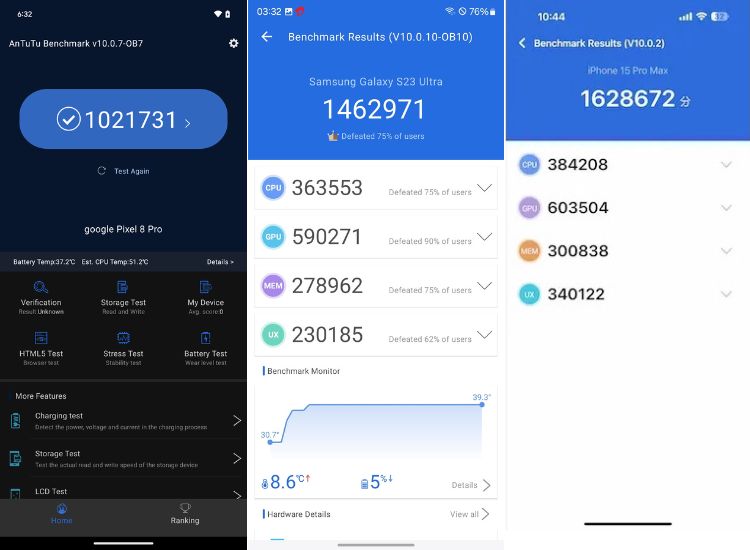
| Processors | AnTuTu 10 Benchmark |
|---|---|
| Tensor G3 | 1021731 |
| Snapdragon 8 Gen 2 | 1462971 |
| A17 Pro | 1628672 |
3DMark Wild Life Extreme Stress Test
To test the GPU on the Tensor G3, Snapdragon 8 Gen 2, and A17 Pro, we performed the intensive 3DMark Wild Life Extreme Stress test on all three phones. Unsurprisingly, the A17 Pro topped the list with the best loop score of 4110, followed by the Snapdragon 8 Gen 2 with 3766, and the Tensor G3 coming last with a 2396 score.
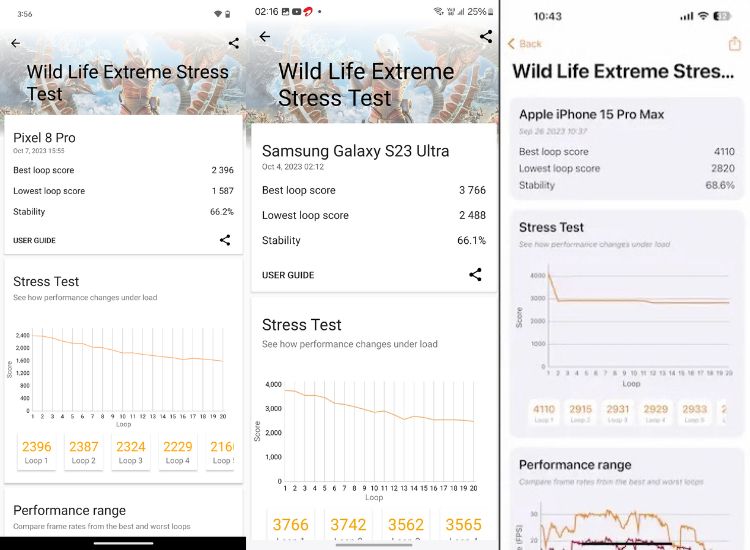
However, the stability has been quite similar on all three chipsets and the Tensor G3 holds up well. If you look at the temperature reading, you can see that the Tensor G3 is well below 44°C so yeah, Google is prioritizing efficiency, be it the GPU or CPU.
3DMark Wild Life Extreme Stress Test Best Loop Score Lowest Loop Score Stability Temperature Tensor G3 2396 1587 66.20% 43.8°C Snapdragon 8 Gen 2 3766 2488 66.10% 44.7°C A17 Pro 4110 2820 68.60% 44.9°C
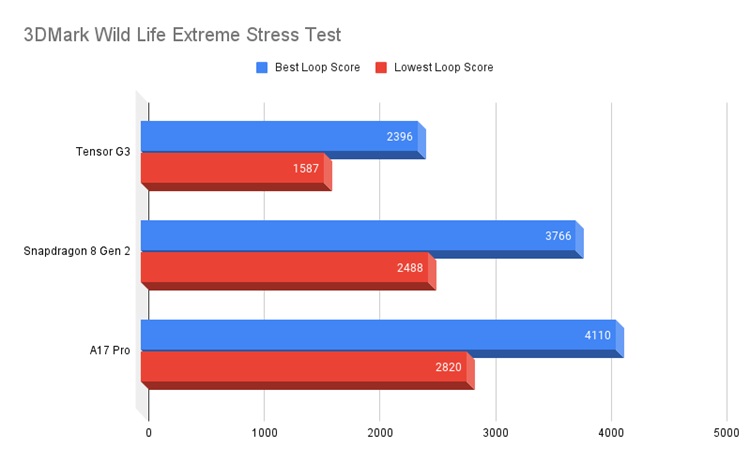
Tensor G3 vs Snapdragon 8 Gen 2 vs A17 Pro: ISP
Google didn’t unveil much about its Image Signal Processor and Imaging DSP, but it has gone through several improvements and it’s codenamed “Callisto.” For many image processing tasks, Google now uses its custom DSP instead of the GPU. AI features like Photo Unblur and depth mapping take advantage of the new DSP. You also get better night shots and portraits, thanks to the new DSP.
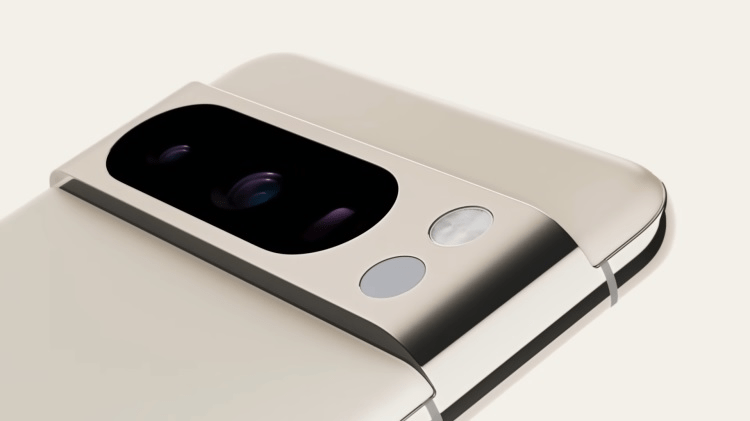
On the Snapdragon 8 Gen 2, you get a capable ISP with 18-bit triple architecture. It can take photos up to 200MP, shoot 8K HDR videos, engage all three cameras at once, and do much more. In terms of raw image processing power, the SD 8Gen2 ISP is definitely a powerful block on the chipset.
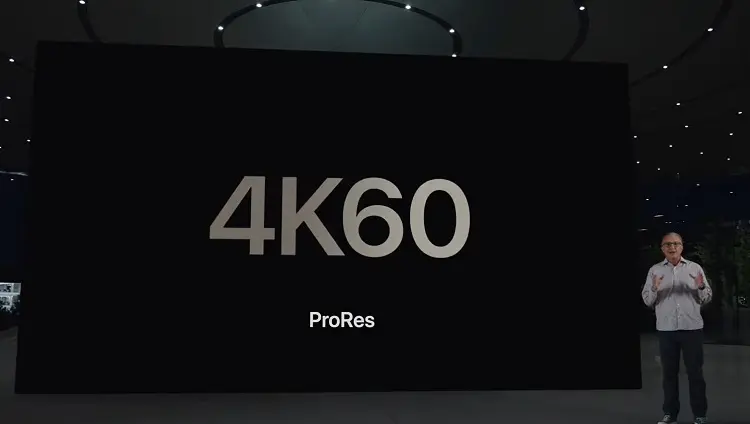
Moving to the ISP on the Apple A17 Pro, well, the Photonic Engine powers most of the camera features on the iPhone. It can now process better night photos, portrait images, and even add depth effects later on. The new ISP also allows you to capture Spatial videos (3D) that you can relive on an Apple Vision Pro with incredible clarity and depth. Overall, all three ISPs are quite powerful and it depends on the OEM how well they take advantage of the hardware features.
Tensor G3 vs Snapdragon 8 Gen 2 vs A17 Pro: AI and ML
The custom TPU, codenamed Rio, powers most of the AI features on the Pixel 8 series, be it the updated Magic Eraser, Audio Magic Eraser, Best Take, on-device speech recognition, Photo Unblur, and many more. It can even run Google’s foundation AI models on the device.
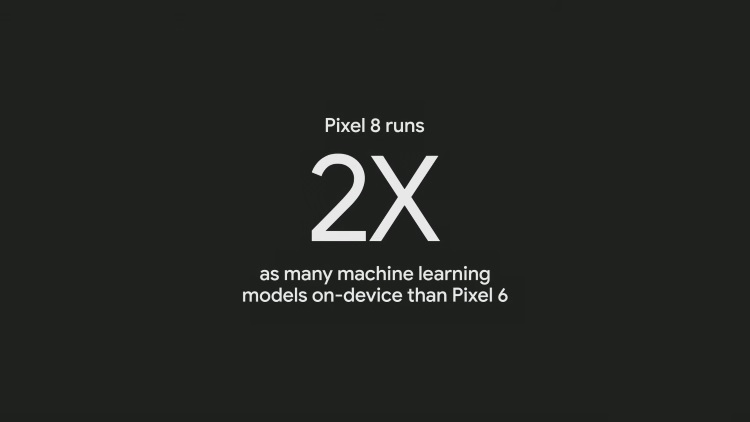
According to Google, the Pixel 8 can run twice as many machine learning models locally as compared to the Pixel 6. Not to mention, the Pixel 8 series can run 10x more complex on-device models, thanks to the new custom TPU. Finally, you can access new AI-centric features like Recorder Summarize, Smart Reply in Gboard, and Zoom Enhance.

The AI Engine on the Snapdragon 8 Gen 2 is also promising and can perform 27 TOPS (trillion operations per second). Qualcomm says the new AI Engine is now more efficient than ever. However, in this particular comparison, Apple takes the cake, at least on paper. The 16-core Neural Engine on the A17 Pro can perform 35 TOPS, which is impressive. That being said, Google is in the best position to offer many on-device generative AI features for years to come.
Tensor G3 vs Snapdragon 8 Gen 2 vs A17 Pro: Wireless Connectivity
Google is still using Samsung’s 5300 5G modem on the Pixel 8 series, which may be disappointing to some due to existing connectivity issues that plague the Pixel 7 series. Both the Snapdragon 8 Gen 2 and Apple A17 Pro use Qualcomm’s top-of-the-line Snapdragon X70 5G modem, which offers unparalleled speed and network stability. So in terms of mobile connectivity, Google sure lags behind Qualcomm and Apple.
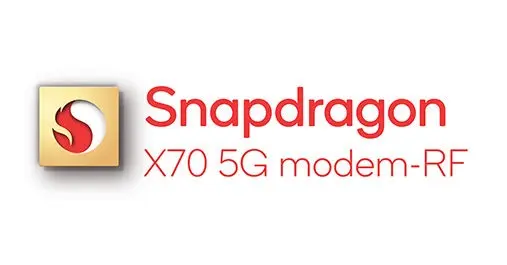
Apart from that, the Tensor G3 and Snapdragon 8 Gen 2 are equipped with Wi-Fi 7, Bluetooth 5.3, and LE for local connectivity. The Apple A17 Pro comes with onboard Wi-Fi 6E support, Bluetooth 5.3, and LE.
Tensor G3 vs Snapdragon 8 Gen 2 vs A17 Pro: So, What’s the Verdict?
There’s no doubt that all three chips are quite capable and bring almost everything to the table. The A17 Pro has a powerful CPU and GPU, but power and thermal efficiency are something that Apple needs to take seriously. Whereas the older Snapdragon 8 Gen 2 is turning out to be an impressive chipset even after a year of its release.
The underclocked Tensor G3, however, puts its money on efficiency over performance. It’s close to the Snapdragon 8+ Gen 1 meaning Google’s latest Tensor G3 chipset is at least a generation or two behind the competition. To elevate the performance, Google should have opted for Samsung’s latest LPP+ 4nm process node. It could have also added more cores to the GPU, but again, Google is in a tight spot. Due to the older fabrication process, it doesn’t have much leeway to make the processor highly performant.
Having said that, mobile chipsets have gotten pretty powerful in recent years, and chasing only benchmark numbers at the cost of battery life and thermals is not desired. So Google’s approach of building efficient mobile processors is not wholly unfounded. It has managed to bring down the temperature significantly with the Tensor G3. The battery life should be better on the Pixel 8 series. To reach a conclusive verdict, wait for our detailed review of the Pixel 8 Pro.


















